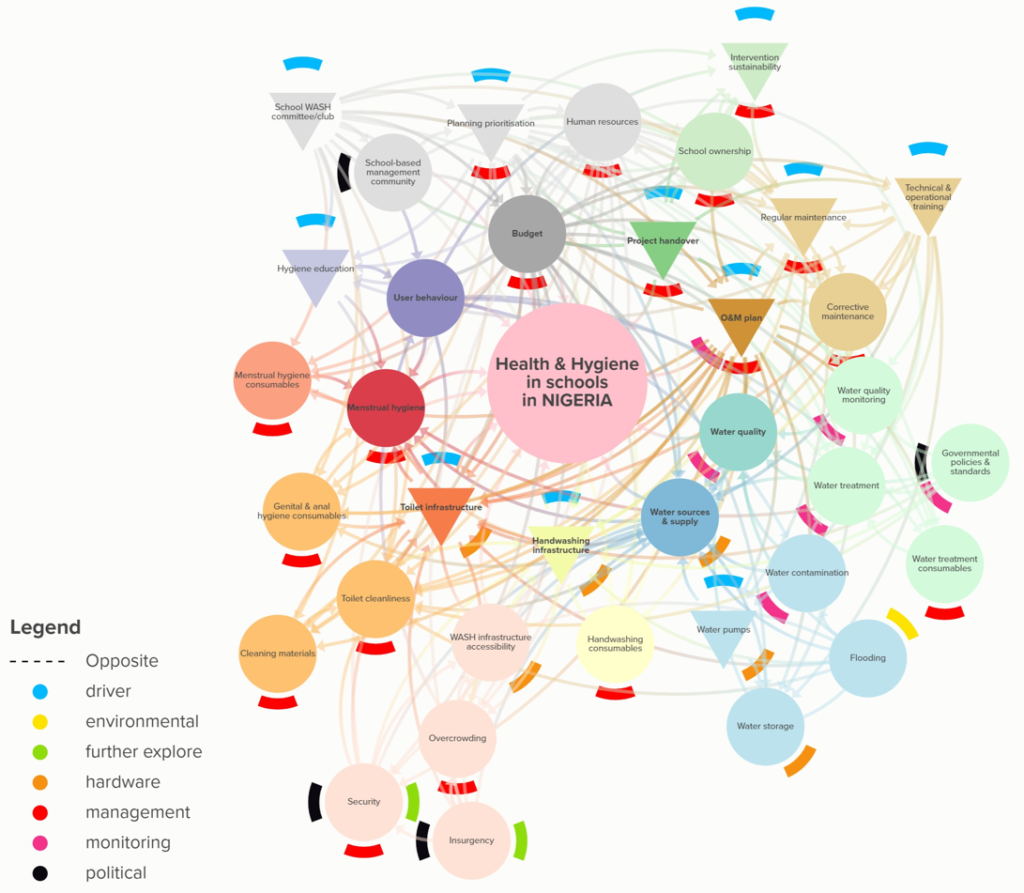Theory of Change: An overview
The hands4health Theory of Change (ToC) was designed to fully integrate the project’s systemic approach (WP 5), by: (i) Investigating the whys behind the problems and challenges identified in the approach; (ii) Enabling the exploration and identification of the root causes to these issues; and, (iii) Providing a base for testing pathways to change based on the project actions.
The ToC process started in 2021, when a roadmap for the ToC consultation and stakeholder engagement was defined with the guidance of the consultant Silva Ferretti. The ToC will be continuously updated and adapted throughout the project duration, based on the project activities and results, changes in contexts, etc. The process is led by Skat Foundation, in close collaboration with FHNW.
Developing rich picture maps
The first step of the hands4health ToC journey consisted in developing rich picture maps for each of the project countries. The goal was to understand how the local WASH systems work in the schools and health centres of the project countries, and to identify the interplay of actors and factors that shape the overall system dynamic. This was achieved through online participatory workshops held with consortium partners and local teams in 2021 and 2022. All inputs were documented on miro boards that later underwent polishing, which included clustering the information into the systemic approach categories (e.g., hardware, software, management, etc.).


Transitioning to the Theory of Action
The result of the exploratory workshops were 4 broad, rich and complex maps, which depict the reality of the WASH systems in schools in Nigeria and Palestine and health care facilities in Mali and Burkina Faso. The next step is the transition to the Theory of Action (ToA), which is an additional layer to the ToC map. The ToA, contrary to the ToC, is inward looking (i.e., project-focused) and identifies the most relevant actions to be pursued, highlighting the potential pathways to change.
To enable the transition from the ToC to the ToA, a side-step was pursued: problem-trees. The latter enable the identification of the root causes to a main problem, i.e., those that can be influenced through an intervention or policy. For this step, additional rounds of online participatory workshops with the local country teams were pursued. Although problem trees follow a linear thinking process, which goes against the complex logic of the ToC, they have proven to be a useful tool to determine the whys and root causes behind the problems identified in the systemic approach and ToC maps.
Upon the completion of the problem trees, the ToC maps and root causes were transitioned from miro to kumu. This was done to enable a better visualisation and understanding of the interactions and dynamics within the individual WASH systems of the project countries.

The ToC maps highlighted important gaps and solutions regarding the WASH systems in health centres and schools in the project countries. In the second half of 2022, the hands4health intervention was adjusted to integrate some of these insights, without extrapolating the project’s budget and capacity limits.
Theory of action layers are currently being added to the kumu maps, highlighting the project’s actions and potential pathways to change. This process will be finalised by the end of the year. Next steps include validating the ToA maps with the implementing partners, as well as assessing the interactions and causal loops between the different project actions and identified issues/gaps.